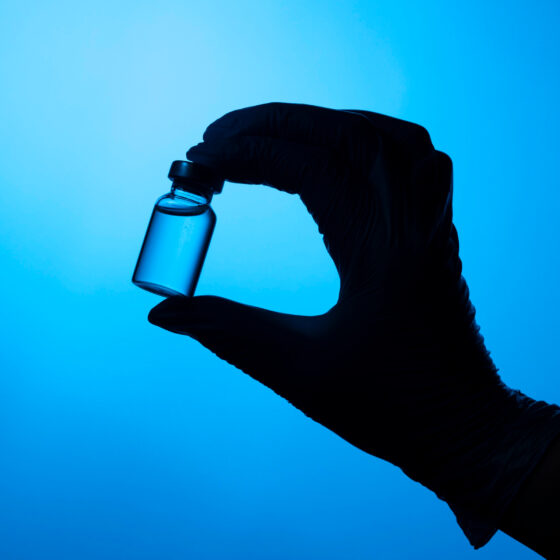The use of illegally-made fentanyl is driving a national health crisis as people use it unintentionally and die from overdoses. Fentanyl is now involved in more deaths of people under age 50 than any other cause in the country, including even heart disease, cancer, suicide, homicide, or any other accident.
What is “goofballing?”
Fentanyl is intentionally used together with methamphetamine and other stimulants, commonly called “goofballing,” or sometimes “speedballing.” In the past, a speedball was mixing cocaine and heroin. Today fentanyl is vastly cheaper than heroin and meth is even more inexpensive than cocaine, and both are extremely powerful and potent.
But many deaths from fentanyl are because people don’t know they’re taking it. Fentanyl can be laced into any other street drug or pressed into a pill that looks just like another drug. Someone can think they are taking a pill like Adderall, Xanax, MDMA (“Exstacy”), or anything else and it can actually be fentanyl. And, just one dose can kill you.
Even if you don’t use non-prescribed or illicit drugs, the vast scope of the crisis means you likely know someone who is affected by it. We all need to be aware every day of the risks associated with fentanyl, and what can be done to prevent overdoses as well as how to recognize and reverse them.

What is fentanyl?
Fentanyl is a synthetic opioid made in labs. It can be up to 50 times stronger than heroin. Fentanyl is a medication that is prescribed by doctors, but most of the fentanyl that is used is made illegally in labs and mixed into counterfeit and illicit drugs bought on the street.
Even small doses of fentanyl can be fatal. Just two milligrams the size of two grains of sand can be enough to kill someone. Fentanyl acts very quickly. People can stop breathing in as little as five minutes.
What is the scope of the fentanyl crisis?
Overdose deaths in America are at an all time high. Over 106,000 people died from overdoses in 2021, according to a study of data from the U.S. Centers for Disease Control and Prevention. The same study found that deaths from methamphetamine increased 50-fold between 1999 and 2021. Nearly two-thirds of fatal meth overdoses involve heroin or fentanyl. Legal authorities have made record-breaking seizures of fentanyl and methamphetamine, but the drugs are still widely available and cheap. Upwards of 60% of confiscated illegal drugs are contaminated with lethal doses of fentanyl.
“Mixing methamphetamine and opioids isn’t a new phenomenon,” said lead researcher Rachel Hoopsick, an assistant professor of epidemiology at the University of Illinois at Urbana-Champaign. “Although there has been an increase in the popularity of using these types of substances together, what has truly changed is the toxicity of the unregulated street drug supply, predominantly of fentanyl and other synthetic opioids. I believe that this is the primary driver of the increase in deaths.”
It isn’t just the combination of the two drugs that leads to fatal overdoses, it can be difficult to recognize the signs of an overdose and be able to help reverse it in time.
What are the signs of a meth and fentanyl overdose?
When someone is using methamphetamine, it masks the effects of the opioid they’re mixing it with. Meth also outlasts heroin and this is where the dangerous effects happen to someone’s heart. It can go from very slowly beating to rapidly beating. When rapid changes in heart rate occur, it can lead to arrhythmias, heart failure, and stroke. Mixing these two drugs can also cause respiratory failure.
Signs of overdose that can occur when mixing opioids and methamphetamine are:
- Small, constricted “pinpoint pupils”
- Irregular heartbeat
- Inability to talk
- Vomiting
- Loss of consciousness
- Choking or snore-like gurgling sounds
- Blush lips or fingernails
- Discolored, cold and/or clammy skin
- Slow, erratic, shallow breathing.
The CDC has a podcast that discusses the dangers of fentanyl and also a fact sheet. This short video gives some information on how to protect yourself from the dangers of fentanyl.
It is possible to reverse an overdose and save someone’s life.
Naloxone is a medication that can reverse overdose by fentanyl and other opioids, such as heroin, morphine, and oxycodone. It can very quickly restore normal respiration to a person whose breathing has slowed or stopped as a result of overdosing.
In March 2023, the FDA approved over the counter sales of naloxone. If you or someone you know is at increased risk for opioid overdose, you should carry naloxone and keep it at home.
If you suspect someone has overdosed on fentanyl, it is critical to act as quickly as possible. Even if the situation is unclear, following the steps below could be the difference between life and death and they will not do any harm.
- Call 911 immediately
- Administer naloxone if available
- Try to keep the person awake and breathing
- Lay the person on their side to prevent choking
- Stay with the person until emergency assistance arrives
The CDC advises that “Naloxone won’t harm someone if they’re overdosing on drugs other than opioids, so it’s always best to use it if you think someone is overdosing”.
Many states offer naloxone and training to people for free, as well as test strips to determine if fentanyl is in drugs. Check your local laws to see if pharmacies in your state can give you naloxone without a prescription. Naloxone is commonly found as Narcan Nasal Spray. To find naloxone near you or get help obtaining it, you can visit the non-profit NEXT Distro.
How can you help with the fentanyl crisis?
Here are some ways you can help, provided by the Partnership to End Addiction and Recover Together.
- Educate your loved ones on the dangers and prevalence of fentanyl
- If you are a parent or caregiver, learn how to recognize and respond to symptoms of mental health struggles in young people
- The Surgeon General urges more Americans to carry and learn how to administer naloxone-a medication that rapidly reverses an opioid overdose. Many recovery community organizations provide local training, or you can take online courses through organizations like the Red Cross.
- Rapid test strips can determine if drugs are mixed or cut with fentanyl, and with the CDC’s help, many states and communities have programs to make these test strips available. You should use these programs to always test any drugs before use.
- Learn to recognize the signs of overdose and be prepared to call for help
- Help spread awareness throughout your community by sharing information about fentanyl. The National Fentanyl Awareness Day site has important facts and figures in shareable graphics.
What to do if you need help with methamphetamine addiction
Affect developed the first digital program using contingency management and harm reduction for stimulant addictions like meth and cocaine. The program is delivered completely through a smartphone app that is designed using game theory to keep people engaged and make it easier to access their recovery program from anywhere.
While there are medications that can help ease discomfort and cravings, there is no FDA approved medication for stimulant addictions like there are for opioids. And it is known that traditional abstinence-based programs are not effective. “Contingency Management” is a clinical term for using a system of rewards to encourage people to keep going. These little wins provide jolts of dopamine that activate the part of the brain where stimulants work. “Harm Reduction” is another clinical term that means a gradual reduction of drug use. It is not necessary to be drug-free to start the program.
Combined, these scientifically-proven methods have been found to be more than twice as effective than previous methods in successfully treating addictions to stimulants like meth, cocaine, crack, and prescription drugs like Adderall or Ritalin.
Affect’s program is covered by insurance and we accept Medicaid. Many people have no out of pocket costs to start their recovery journey.
Breaking free of meth is the best way to make sure you don’t get meth laced with fentanyl and end up as one of the thousands of people who die from overdoses every year. If you have questions about Affect you can check our FAQ or reach out to us to see if our full program is the right fit for you. Our app is free to use for anyone.


